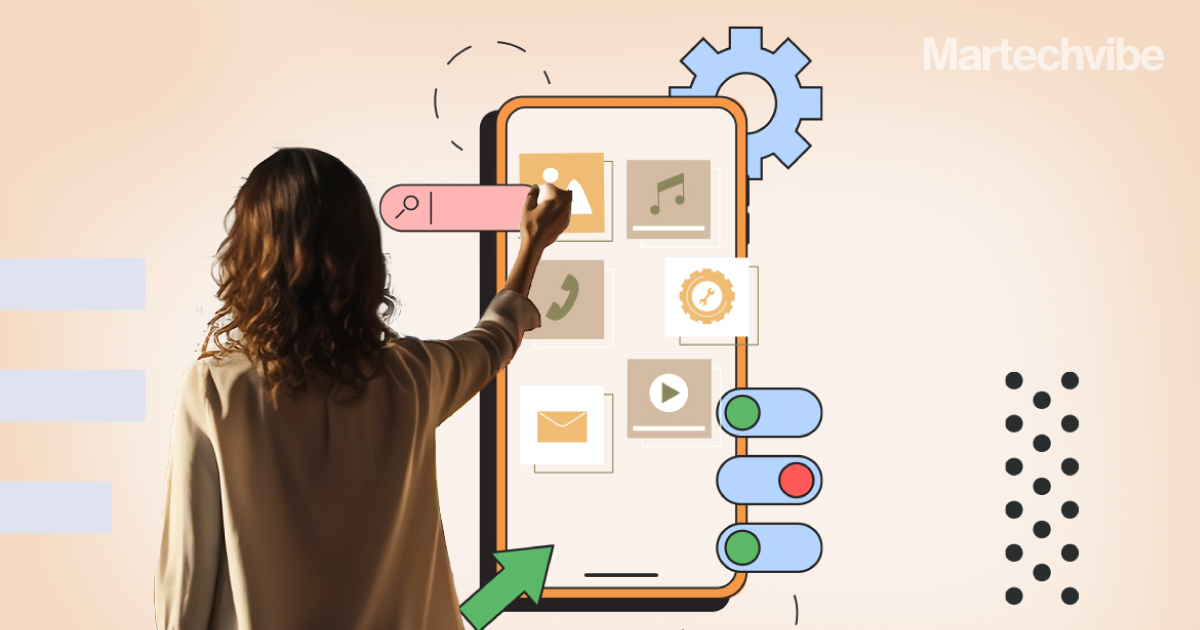When Traditional App Metrics Aren’t Enough
Hoopla is an app that helps families build healthy habits. We spoke to founder & CEO Jacqueline Perrottet about navigating user engagement and behaviour change.
Topics
What to Read Next
- Cvent to Acquire ON24 for $400 Million
- MobiLoud Unveils AI-Powered Analytics Dashboard for Mobile App Insights
- Avaya Chooses Gemini Enterprise & Google Workspace to Power AI Strategy
- Optimove Launches New Email Marketing Solution
- iMini AI Integrates Kling 2.5 Turbo & Wan 2.6 for Next-Gen AI Video Creation

As someone who struggled with anxiety for most of her life, Jacqueline Perrottet wanted to create a working model to help children learn how to manage their emotions and deal with stressful situations.
Perrottet worked with a team of healthcare providers, educators and app developers to create Hoopla – an app designed to provide children and parents with the tools and resources they need to improve their emotional well-being together.
“Through a combination of user engagement metrics, feedback, activity completion rates, and mood tracking, we track progress and behaviour change. We have plans to develop this area further to provide parents with insights and summaries of their family’s interactions, highlighting areas of growth and opportunities for further development,” she says.
We spoke to Perrottet, the Founder & CEO of Hoopla to understand how the app manages content so it’s scientifically validated and engaging.
Tell us about the audience and the value proposition for Hoopla users.
Hoopla is created for modern families facing the challenge of staying connected in a digital-first world. Our app specifically caters to parents and young children, focusing on the vital developmental years. The app’s core value lies in converting passive screen time into active, enriching family interactions that promote emotional intelligence, resilience, and active play. By integrating engaging family activities, tailored mindfulness exercises, and educational multi-sensory content, Hoopla ensures each interaction on the app strengthens family connection and builds emotional regulation skills.
Tell us about your product design team, and the cross-functional sciences at play to design such a product.
Our product design team is a diverse mix of child psychology specialists, digital education experts, UX designers, and software developers. This multidisciplinary team ensures Hoopla’s content is not only age-appropriate and scientifically validated but also engaging and user-friendly. This blend of expertise allows us to create a balanced app that’s both educational and entertaining with an overall goal of minimising screen dependency.
What is the onboarding process like?
The onboarding process is one of the first areas we knew we had to change and will be updated in our next release. Our focus has been to create an onboarding process that is streamlined, informative, and welcoming. New users are guided through a personalised setup that gauges their family structure and concerns. Our goal is to create a process ensuring families feel instantly at home with Hoopla, embarking on a journey of shared learning and growth.
How do you measure success?
At Hoopla, success goes beyond traditional metrics. While user numbers are important, at this early stage we place greater emphasis on the depth of user engagement, the enhancement of family relationships, and the positive impact on children’s mental health. We rely on a combination of data analytics and heartfelt user feedback to evaluate the effectiveness of our app, with a particular focus on real-world improvements in family relationships and child development.
What strategies do you use to keep users engaged?
Our user engagement strategies are multifaceted and still evolving. In January, we launched a new series of family challenges, developed in response to user feedback. Our commitment to continuously evolve and adapt is evident in our active pursuit of user insights. These challenges are designed to deepen family interaction and bonding, grounded in real-world feedback and usage patterns while promoting daily user engagement.
In addition, we are focused on further developing:
- Personalisation: Delivering customised content to meet the unique needs of each family.
- Gamification: Infusing learning and bonding activities with fun and competition.
- Product Development: Regularly updating the app with new features and content.
- Community Engagement: Creating a sense of community among users through shared experiences and stories.
Also Recommended: Does Your Super-app Strategy Align With App’s Core Identity?








































































































